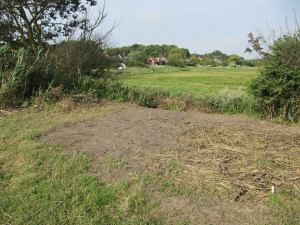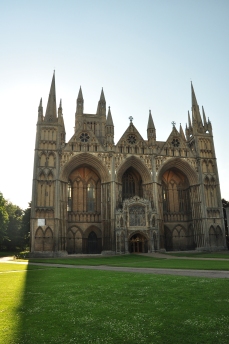
Access Cambridge Archaeology (ACA) with the Cambridge Archaeological Unit (CAU) led the recent community excavations within the Peterborough Cathedral precint, where 8 trenches were excavated by a over 150 volunteers over a 12 day period. The dig culminated last weekend with the Peterborough Heritage Festival that celebrated both the heritage and history of the city of Peterborough and the Cathedral. Each day over the Heritage Festival weekend, we also had just over 400 visitors through the gate to see the archaeology.
The community excavations were part of the Cathedral’s ‘Peterborough 900: Letting it speak for itself’ project which had been awarded money from the Heritage Lottery Fund (HLF) as part of these 900th anniversary celebrations of the cathedral in 2018. This will also include the construction of a new Heritage Centre at the cathedral which will enable a larger number of visitors and school groups to engage diretly with the cathedral.
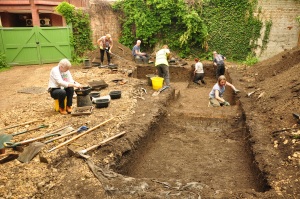
The primary aims of the community excavations were to investigate the north-west area of the precints (the Garden House), which has had no previous archaeological work carried out on the area. We also wanted as many local residents as possible to be involved, whether they had had any previous interactions with the cathedral or not and to learn more about the city that they live in.
The original 7th century abbey on the site was ramsacked during 8th century by Viking raids so when the monastic site was re-founded in the 10th century, it was re-built as a cathedral on the original abbey site with the addition of a defensive ditch and embankment, known as the Burgh Wall. This wall, found during early 1980’s excavations in the Deanery Garden, was projected to continue through the Garden House area. The other main feature thought to be in this area of the precint was the medieval fish pond, which was noted on 19th century maps as well as partly identifed through the geophysical survey undertaken of the Garden House site prior to the excavation.
Features were already visible within the garden prior to the excavation – a probable late 19th century wall was recorded running northwest-southeast, in front of which was a large deposit of complete bottles and jars, fragments of plates and other pots, animal bone, smoking pipes and other general domestic rubbish.
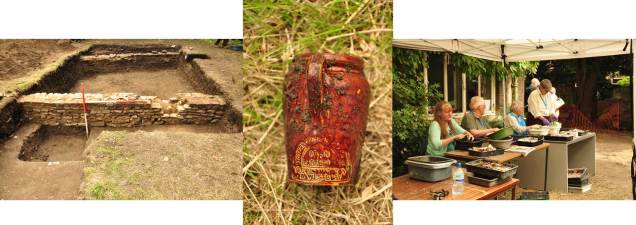
As the excavation continued in Trenches 5 and 6, the stratigraphy of the garden, both when it was part of the Deanery garden and from use of the Garden House, were evident. Towards the end of the dig, we were finding fragments of drinking vessels from Germany, almost complete clay pipes, oyster shell, decorated pottery and further butchered animal bone, most of which dated from the 16th and 17th centuries. Under this deposit we found 13th century pottery, in a black organic layer of soil which had also preserved a wooden post and part of the sole of a leather shoe.

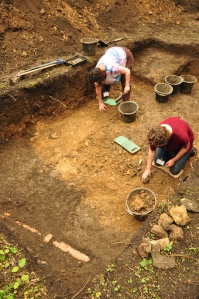
The site of the backfilled medieval fish pond was found through trenches 1, 2, 3 and 4 and so encompassing the largest area of the site to the south of the Garden House. The pond was backfilled over a 3-year period between 1823 and 1825 and contained a large mix of material, as well as larger building remains, we also found painted plaster, medieval window glass, mortar, a 15th century Nuremburg Jetton, a coin of George IV as well as fragments of Roman pottery.
All this backfilled pond material was thought to have come from other building projects around the precint, during the 1820’s so the origins of the majority of the finds recorded are not known, but the range of material recovered shows just how much disturbance there has been on the Garden House site.
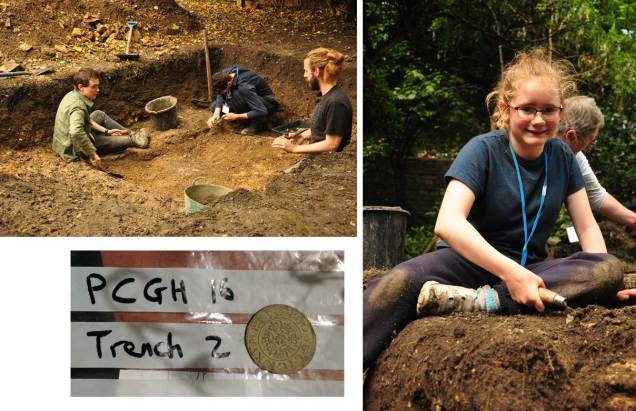
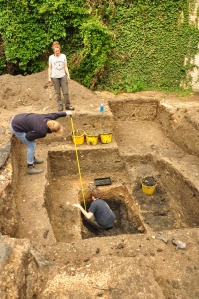
Trench 1 was one of the deepest of all the trenches and it was from this trench that the northern extent of the pond was recorded. The presence of black organic rich soils that was noted in the bottom of trench 1 was also recorded in the early 1980’s excavation in the Deanery Garden and so was known to be outside the Burgh Wall. It was believed that in Trench 1 that the construction of the medieval fish pond had removed any trace of the Burgh Wall within the Garden House site.
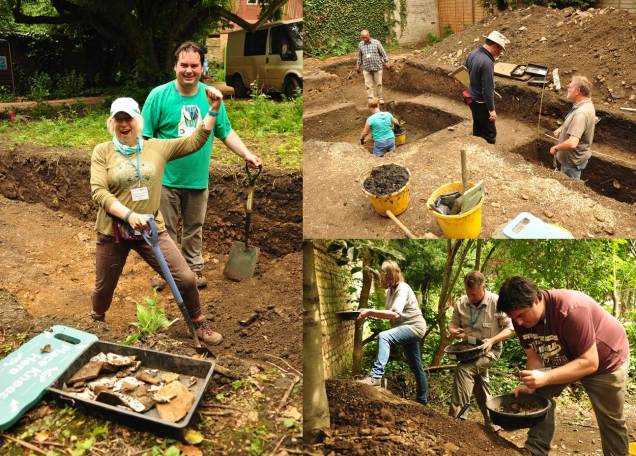
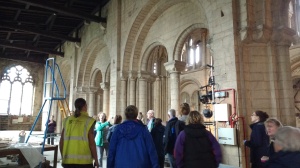
We had a mixed week with the weather, the start of the dig there were some very wet days, during the worst of which the Cathedral Archaeologist Jackie Hall gave a guided tour around the cathedral for the volunteers to learn more about the site that they are digging on.
Also learning about archaeology and the history of the cathedral site were a number of primary school children from Peterborough. All the groups got to be involved with a number of activities on site, including test pit excavation, sieving, finds washing and metal detecting. We also had help from the local Young Archaeologist Club and the Junior Friends of the cathedral.
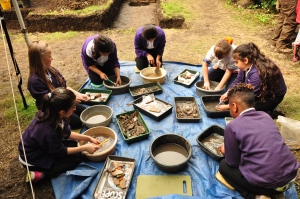

We had much interest from the local media, including the Peterborough Telegraph, the article of which can be seen here. We were also filmed by BBC Look East and ITV Anglia news as well as making a quick appearance on the BBC Radio Cambridgeshire Breakfast Show!
On the last weekend of the dig the Peterborough Heritage Festival was also going on around the precincts, where many of the volunteers and stall holders also come to visit us. We had a number of our finds on display and on the Saturday and Paul Blinkhorn, a freelance pottery expert and former Time Team and Pub Dig star was availble to talk to the visitors and answer questions. This role was filled by both the Cathedral Archaeologist Jackie Hall and ACA and CAU manager Alison Dickens on the Sunday.
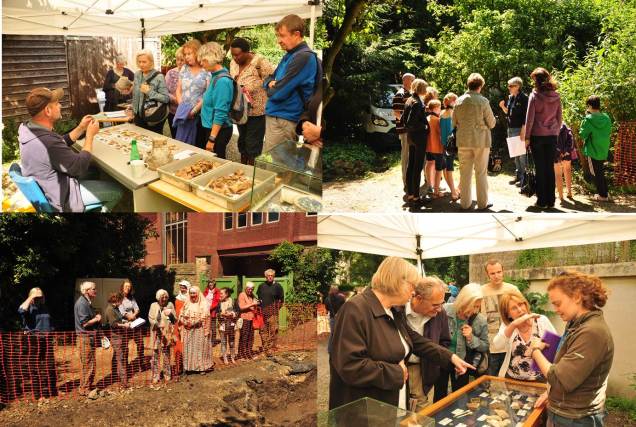
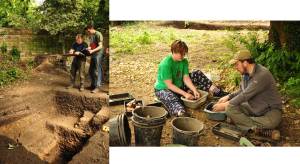
A lot of the final recording of the trenches also had to take place over the weekend before the backfilling of the trenches took place on the Monday, as well as any final finds washing and the inevitable last minute investigations with a trowel!
Feedback from the excavations has been excellent, with all the volunteers saying that they rated their time on the excavations as either ‘excellent’ or ‘good’ with some volunteers also leaving positive comments, such as ‘I enjoyed learning a bit more about the history of the town I have been living in for the last 15 years’ (CH), ‘the satisfaction of working with like-minded people. I have learnt so much in such a short time’ (AB), ‘..the atmosphere was relaxed and friendly’ (SH), ‘I enjoyed seeing my 11 year old daughter getting stuck in and excited about it all’ (HR) and ‘being able to relate finds to my knowledge about the cathedral and helping to build a picture of what is found’ (SO). KC also said ‘It was good for me to gain practical experience as I’m trying to begin a career in field archaeology. I was given a lot of help and advice from the archaeologists’.
The final part of the dig was to leave the site in a safe and clear way, even though it meant filling in everyone’s hard work! The next phase is to process, record and analyse all the finds so the final write up can begin. As these results become available we will put them on the ACA website and on social media – so keep following us for more results as we get them
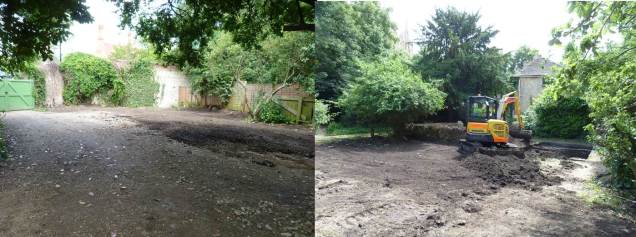
ACA would like to thank all the volunteers, young and old who took part in the excavations, you all helped make the dig such a success. Thanks must also go to all the cathedral staff involved with the project, before and during as well as the Heritage Festival volunteers and the CAU supervisors who ran the trenches and looked after the archaeology as well as the volunteers!

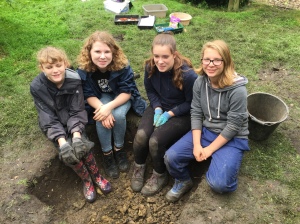
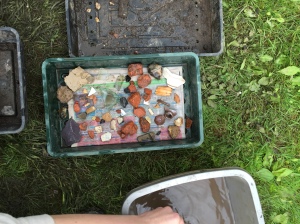
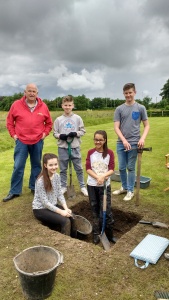



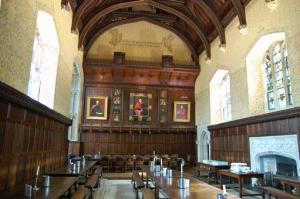
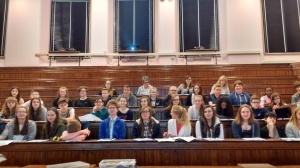

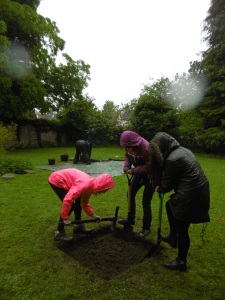

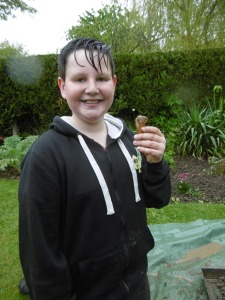
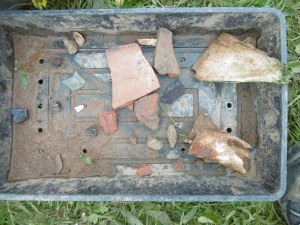

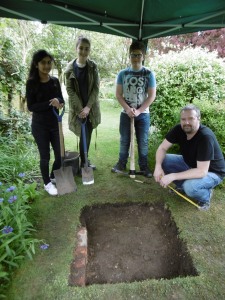
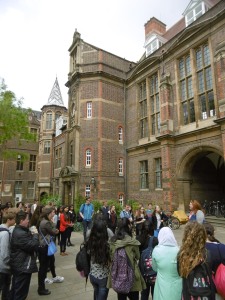

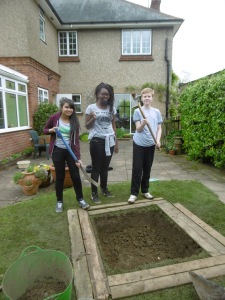

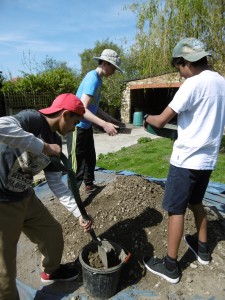 Test Pit 1
Test Pit 1 Members of AGES AHA carry out their excavations
Members of AGES AHA carry out their excavations Hadleigh Castle
Hadleigh Castle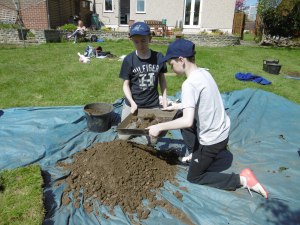 Sieving in the sun at Test Pit 2
Sieving in the sun at Test Pit 2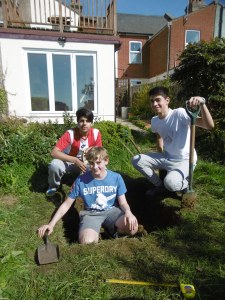 Test Pit 3
Test Pit 3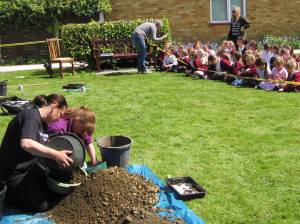 There was a coffee meeting in the United Reform Church Base at 10-12pm on Day two and Alison Dickens and Terry Barclay spoke with over 100 Primary School Students about what we had found.
There was a coffee meeting in the United Reform Church Base at 10-12pm on Day two and Alison Dickens and Terry Barclay spoke with over 100 Primary School Students about what we had found.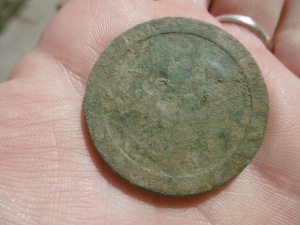 ‘Cartwheel Penny’ Georgian Coin found in Test Pit 1
‘Cartwheel Penny’ Georgian Coin found in Test Pit 1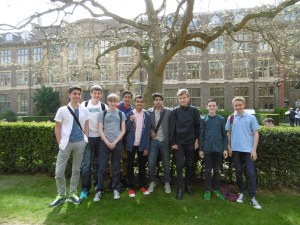 The students at the University of Cambridge
The students at the University of Cambridge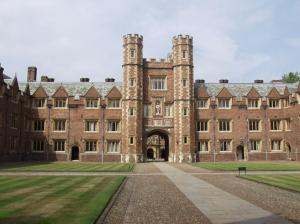 St Johns College
St Johns College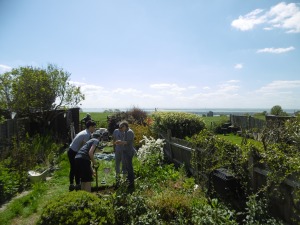 Test Pit 3 What lovely weather!
Test Pit 3 What lovely weather!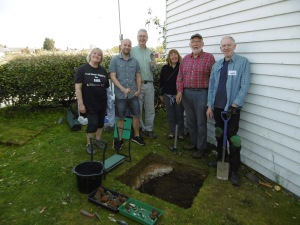 Test Pit 6 The Crew!
Test Pit 6 The Crew!